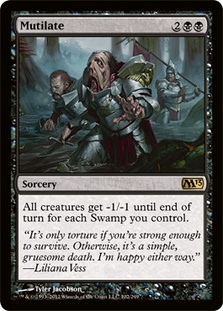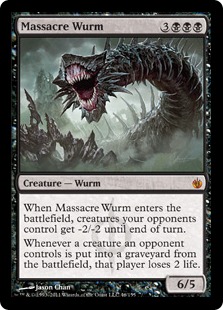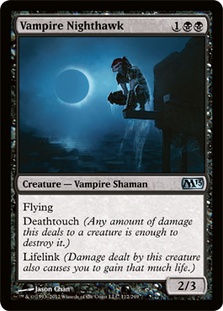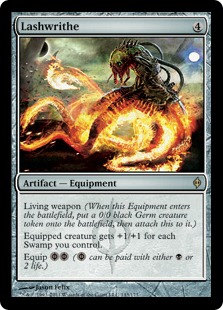Let’s start things off with a disclaimer:Â I have not been able to find a Mono-Black Control deck that I actually think is good. It’s not for lack of trying, either. My Magic online deck folder is littered with the skeletons of different versions that I’ve tried, tweaked, and discarded for one reason or another. I spewed off something approaching triple digits worth of tickets in the two-man queues with various incarnations before finally giving up.
But just because I quit on the deck doesn’t mean there isn’t something there. If I didn’t have the World Magic Cup as a pressing concern, I’d likely keep experimenting. There were certainly elements of each of my various builds that I liked, but I don’t feel like the week I have remaining to test for the event is enough time to get things right. With that in mind, I’m going to walk through several versions of Mono-Black that I worked on and discuss what I felt were their strengths and weaknesses. Maybe one of you out there can find something I missed and turn one of these shells into a true contender.
But before I get to the lists, we need to ask ourselves a question—why Mono-Black Control? In truth, you should ask yourself this sort of question before building any sort of deck, but Mono-Black Control is a peculiar beast. People seem to be absolutely enamored by the concept of it and go to great lengths to try to make it work. Why mono-black? Why not black/blue, or black/red, or black/white, or black/green, or Grixis, or whatever? There has to be some compelling reason to legitimately want to play mono-black, particularly with the ease of playing allied two-color decks and the quality of mana fixing these days.
I believe the major compelling reason to play mono-black in Standard right now is Mutilate. The popularity of green creature decks—be they Naya, Bant, G/W, or G/R—makes having access to a density of inexpensive sweepers very compelling. In my many, many matches with MBC lately, I beat almost every green deck I played against. Sometimes they can beat one Wrath effect, but rarely can they beat two or more. If you anticipate a field rife with green decks, you might be able to just take one of these lists and be successful without changing much at all.
But without further ado—the decks!
First up, Mono-Black Ultra-Control:
This is the version of the deck that I have spent the most time testing. I discussed some in my article last week that I felt like the Sorin plus Sorin’s Vengeance plan was too bad against too much of the field and I wanted to try just playing more trump cards, so that’s exactly what I did. Each of Karn, Sorin, Griselbrand, and Massacre Wurm is hugely powerful in the right situation. Karn and Griselbrand in particular are virtually impossible to lose with if you resolve them when you’re not tremendously behind. Diabolic Revelation doubles as additional copies of any of these and gives you the ability to set up a backup Distress to ensure they resolve. I once cast a Diabolic Revelation for four, finding Distress, Karn, Mutilate, and Sorin Markov, then made sure the coast was clear with the Distress before playing the Karn to free my Griselbrand from an Oblivion Ring. Suffice it to say I won that game.
This deck is capable of many such ultra-powerful plays, and for that reason it’s a ton of fun. The problem is consistency. With only four Sign in Blood for card drawing, you can frequently kill everything your opponent plays at the beginning of the game but just fail to find anything to actually win the game for a long time. This isn’t a major problem when you’re playing against green decks, since if you’re not drawing win conditions you’re generally drawing creature removal that can keep you alive at least. Even against more dedicated control decks, you’re usually not in bad shape because they’re generally hard pressed to actually kill you themselves. Â
The problem is Delver. Delver decks are capable of presenting a fast clock that you have to answer or die right away, and they have countermagic that can sometimes stop your sweepers. Sure, whatever—that happens occasionally and you lose those games. The real trouble is the fact that you can very easily lose long games to Delver even after you seem to have gained control.
The main culprit for this is equipment in combination with flash creatures and Moorland Haunt. You can wipe the board three times and be sitting pretty at what seems like a comfortable double digit life total—hell, maybe you even have a Pristine Talisman or two ticking you up every turn—and suddenly a Restoration Angel comes down and picks up a Runechanter’s Pike or two, and you’re just dead. Sword of War and Peace isn’t quite as dramatic but can cause similar issues, while Sword of Feast and Famine can obviously be an absolute nightmare.
Runechanter’s Pike is actually the main reason for the Nihil Spellbombs in the maindeck and the fourth in the sideboard. They’re also good against Zombies and Esper Control style decks, but they’re mainly the best way to avoid dying to Pike. They’re also important after sideboarding to give you a way to handle Snapcaster Mage on hard counters like Dissipate and Negate. Boarding in Duress to try to clear the way through countermagic is a little awkward these days, since it does nothing about the spells ready to gain flashback in your opponent’s graveyard. Â
Talrand can also prove to be a problem, particularly after sideboarding when the Delver deck has access to hard countermagic. The games can go long enough that the Delver player can set up Talrand plus counter backup or even just Vapor Snag to bounce the Talrand and force you to have another sweeper to take him out. Even if you have managed to stay at a healthy life total, it doesn’t take many turns with a Talrand in play to take you to zero.
I decided that I wanted to try a version better equipped to actually end games. I realized I needed more actual win conditions, along with the tools to ensure that they actually resolve. I decided to borrow the Cavern of Souls from ramp decks to resolve my threats—but what threats to play? It didn’t take long before I realized that I could cast both Massacre Wurm and Wurmcoil Engine off of the same Cavern. Here’s where I found myself:
The idea here is to use discard and black removal to buy time to just slam fat creatures. Massacre Wurm is dramatically better than Wurmcoil Engine against Delver since it actually has impact on the game even if it gets Vapor Snagged and can occasionally just win the game on its own via life loss. I considered Grave Titan, but Titan doesn’t do anything about Delvers or Talrand unless you can actually race them. It also means you need a second Cavern to cast two different creatures, whereas in this version you can get by with just a single Cavern on Wurm unless you want to protect your Solemns or Griselbrand.
This deck just played out clunky. You’re basically a ramp deck but with only eight ramp effects. You could add Sphere of the Suns, but it would be at the expense of interaction spells or fatties, neither of which the deck really seems like it can spare. And once you start doing that, why are you playing a black deck rather than just slamming Primeval Titan?
It also doesn’t help that Cavern of Souls interferes massively with the mana costs of Distress and Sign in Blood and can even make Mutilate unable to kill the things you need early on if you draw multiples. I only played this version for a little while before realizing that I wanted the ability to do more cheap, proactive things, which brought me to this version.
Vampire Nighthawk is a sweet proactive card against a lot of decks, especially alongside Lashwrithe. I had some sweet games in which I was able to kill an opponent out of nowhere with double Lashwrithe, but I had far more games that I lost to Runechanter’s Pike or something similar. Sure, Nighthawk is sweet, but it’s not high impact enough to deal with the power level of many of the cards out there. On top of that, playing Nighthawk makes my own sweepers substantially worse—as you can see, this version went down to just two Mutilates since I was trying to do what I could to improve the Delver matchup, and that’s where the sorcery speed sweepers really weren’t cutting it.
That’s about when I stopped myself and realized that I was going down the wrong road entirely. Remember what I said at the beginning: it’s important to keep in mind why you’re building a deck. As soon as I was starting to question whether I wanted Mutilate in my deck at all, I had to question the basic premise of why I wanted to be playing Mono-Black Control. I kept finding that I wanted to pare down on the reactive elements of the deck and put in more proactive cards, but the whole point of building the deck was the strength of Mutilate! Generally where I’d look for proactive cards for a control deck these days are planeswalkers, but neither version of Liliana does what you really need—this deck can’t really afford to discard excess cards early on, and the last thing I feel like I want in most games is more Swamps!
I also kept losing to all sorts of decks that just had cards I couldn’t deal with. Even outside of things like Sword of Feast and Famine, I kept running into Trading Post decks with Spine of Ish-Shah, Tezzeret decks, Tempered Steel decks with Glint Hawk Idol, control and Delver decks alike sideboarding Jace, Memory Adept, etc., etc., etc. Even if I could somehow make my Mono-Black Control deck beat both Delver and green decks, it still had fundamentally gaping holes! Hell, I ran into someone playing Stony Silence against Birthing Pod, and he played it against my board of two Pristine Talismans, a Batterskull, and a Lashwrithe. It was pretty awkward, to say the least.
So what’s the future for mono-black? I hate to say it, but probably not as a control deck. The current format just requires too diverse a set of answers to handle all of the potential problems you might face, and you just don’t have the tools to dig for what you need. Maybe there’s something I’m missing—and frankly, I kind of hope there is because I’ve had a blast beating people up with Griselbrand and friends—but so far I just haven’t been able to piece it together.
Anyone out there got it figured out? Because I’m listening.
Until next time,
bmk
@bmkibler on Twitter
www.facebook.com/briankiblermtg
Support SolForge! My newest game project with Richard Garfield.








